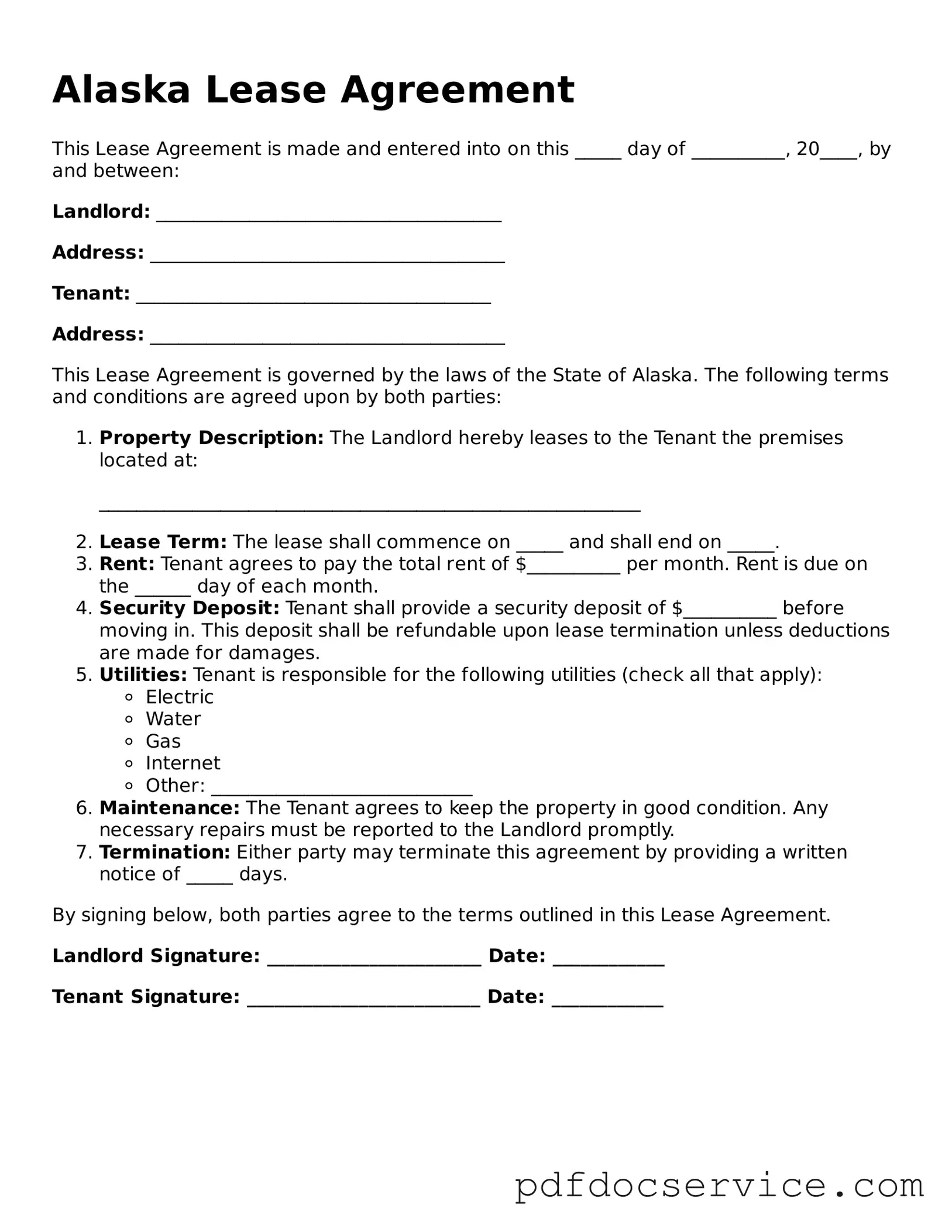Printable Lease Agreement Template for Alaska
The Alaska Lease Agreement form is a legal document used to outline the terms and conditions between a landlord and a tenant in the state of Alaska. This form serves to protect the rights and responsibilities of both parties, ensuring a clear understanding of the rental arrangement. By establishing guidelines for the lease duration, payment terms, and property maintenance, the agreement fosters a respectful and functional landlord-tenant relationship.
Open Lease Agreement Editor
